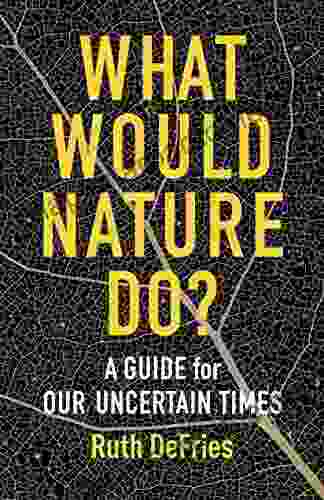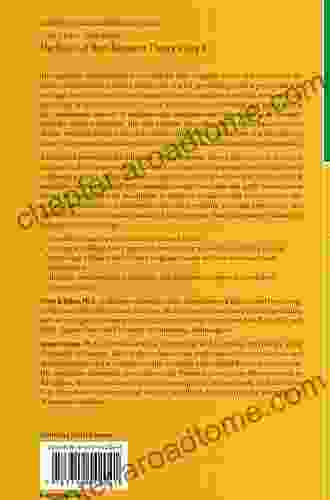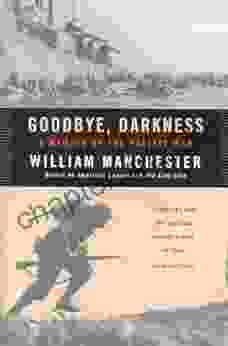Demystifying Item Response Theory: A Comprehensive Guide for Researchers in the Social and Behavioral Sciences

5 out of 5
| Language | : | English |
| File size | : | 2704 KB |
| Screen Reader | : | Supported |
| Print length | : | 188 pages |
Item response theory (IRT) is a powerful statistical technique used to measure the latent traits of individuals, such as their abilities, attitudes, and personality traits. IRT is based on the assumption that the probability of an individual answering an item correctly is a function of the individual's latent trait and the difficulty of the item. This assumption allows researchers to use IRT models to estimate the latent traits of individuals and the difficulty of items.
IRT has been used in a variety of research settings, including education, psychology, and marketing. In education, IRT is used to develop and evaluate tests and to measure student achievement. In psychology, IRT is used to measure personality traits and to develop diagnostic tools. In marketing, IRT is used to measure consumer attitudes and to develop market segmentation strategies.
The Basics of IRT
The basic IRT model is the one-parameter logistic model (1PLM). The 1PLM assumes that the probability of an individual answering an item correctly is a function of the individual's latent trait and the difficulty of the item. The difficulty of an item is represented by a single parameter, b. The latent trait of an individual is represented by a single parameter, θ.
The 1PLM can be expressed mathematically as follows:
P(X = 1 | θ, b) = exp(θ - b) / (1 + exp(θ - b))
where:
* P(X = 1 | θ, b) is the probability of an individual answering an item correctly * θ is the individual's latent trait * b is the difficulty of the item
The 1PLM can be used to estimate the latent traits of individuals and the difficulty of items. To estimate the latent traits of individuals, the researcher must administer a test to the individuals and score the test. The researcher can then use the 1PLM to estimate the latent traits of the individuals from their test scores.
To estimate the difficulty of items, the researcher must administer the test to a group of individuals and record the number of individuals who answer each item correctly. The researcher can then use the 1PLM to estimate the difficulty of the items from the number of individuals who answer each item correctly.
More Complex IRT Models
The 1PLM is a simple IRT model that can be used to measure a single latent trait. However, there are more complex IRT models that can be used to measure multiple latent traits. These models include the two-parameter logistic model (2PLM) and the three-parameter logistic model (3PLM).
The 2PLM includes an additional parameter, a, which represents the discrimination of the item. The discrimination of an item is a measure of how well the item discriminates between individuals with different latent traits. The 2PLM can be expressed mathematically as follows:
P(X = 1 | θ, a, b) = exp(a(θ - b)) / (1 + exp(a(θ - b)))
where:
* P(X = 1 | θ, a, b) is the probability of an individual answering an item correctly * θ is the individual's latent trait * a is the discrimination of the item * b is the difficulty of the item
The 3PLM includes an additional parameter, c, which represents the guessing parameter. The guessing parameter is a measure of the probability of an individual answering an item correctly by guessing. The 3PLM can be expressed mathematically as follows:
P(X = 1 | θ, a, b, c) = (1 - c) * exp(a(θ - b)) / (1 + exp(a(θ - b))) + c
where:
* P(X = 1 | θ, a, b, c) is the probability of an individual answering an item correctly * θ is the individual's latent trait * a is the discrimination of the item * b is the difficulty of the item * c is the guessing parameter
The 2PLM and 3PLM can be used to estimate the latent traits of individuals and the difficulty, discrimination, and guessing parameters of items. These models can be used to develop more accurate and reliable tests.
Using IRT in Research
IRT is a powerful statistical technique that can be used to measure the latent traits of individuals. IRT has been used in a variety of research settings, including education, psychology, and marketing. IRT can be used to develop and evaluate tests, to measure student achievement, to measure personality traits, to develop diagnostic tools, and to measure consumer attitudes.
To use IRT in research, the researcher must first select an appropriate IRT model. The researcher must then administer a test to the individuals and score the test. The researcher can then use the IRT model to estimate the latent traits of the individuals and the difficulty, discrimination, and guessing parameters of the items.
IRT is a complex statistical technique, but it is a powerful tool that can be used to measure the latent traits of individuals. IRT can be used to develop more accurate and reliable tests, and it can be used to gain a better understanding of the factors that influence individual behavior.
IRT is a powerful statistical technique that can be used to measure the latent traits of individuals. IRT has been used in a variety of research settings, including education, psychology, and marketing. IRT can be used to develop and evaluate tests, to measure student achievement, to measure personality traits, to develop diagnostic tools, and to measure consumer attitudes.
This comprehensive guide has provided a thorough to the basics of IRT, making it accessible to researchers in the social and behavioral sciences who are interested in using this technique in their own research.
5 out of 5
| Language | : | English |
| File size | : | 2704 KB |
| Screen Reader | : | Supported |
| Print length | : | 188 pages |
Do you want to contribute by writing guest posts on this blog?
Please contact us and send us a resume of previous articles that you have written.
 Book
Book Novel
Novel Page
Page Chapter
Chapter Text
Text Story
Story Genre
Genre Reader
Reader Library
Library Paperback
Paperback E-book
E-book Magazine
Magazine Newspaper
Newspaper Paragraph
Paragraph Sentence
Sentence Bookmark
Bookmark Shelf
Shelf Glossary
Glossary Bibliography
Bibliography Foreword
Foreword Preface
Preface Synopsis
Synopsis Annotation
Annotation Footnote
Footnote Manuscript
Manuscript Scroll
Scroll Codex
Codex Tome
Tome Bestseller
Bestseller Classics
Classics Library card
Library card Narrative
Narrative Biography
Biography Autobiography
Autobiography Memoir
Memoir Reference
Reference Encyclopedia
Encyclopedia Robert Henderson
Robert Henderson Monica Rix Paxson
Monica Rix Paxson Michael William
Michael William Moshe Mikanovsky
Moshe Mikanovsky Myron Cottrell
Myron Cottrell Neil A Wynn
Neil A Wynn Ali Reza Panahian
Ali Reza Panahian Robert Bridger
Robert Bridger Robyn K Schneider
Robyn K Schneider Ziheng Yang
Ziheng Yang Samit Shahane
Samit Shahane Stephanie Roberts
Stephanie Roberts Moe Alodah
Moe Alodah Monica Mcgoldrick
Monica Mcgoldrick Stephen J Mcphee
Stephen J Mcphee Os Guinness
Os Guinness Milos Jenicek
Milos Jenicek Torben Martinussen
Torben Martinussen Miles V Van Pelt
Miles V Van Pelt Nancy Siskowic
Nancy Siskowic
Light bulbAdvertise smarter! Our strategic ad space ensures maximum exposure. Reserve your spot today!

 Fletcher MitchellScholarship And Critical Assessment: Unlocking the Depths of Literary...
Fletcher MitchellScholarship And Critical Assessment: Unlocking the Depths of Literary...
 Dale MitchellUnveiling the Sacred Rituals of Anglican Liturgy: A Comprehensive Guidebook...
Dale MitchellUnveiling the Sacred Rituals of Anglican Liturgy: A Comprehensive Guidebook...
 Cody RussellA Guide for Our Uncertain Times: Navigating the Challenges and Embracing the...
Cody RussellA Guide for Our Uncertain Times: Navigating the Challenges and Embracing the...
 Donovan CarterThe Clinician's Guide to Integrating Acceptance and Commitment Therapy with...
Donovan CarterThe Clinician's Guide to Integrating Acceptance and Commitment Therapy with... Liam WardFollow ·8.1k
Liam WardFollow ·8.1k Jared NelsonFollow ·12.2k
Jared NelsonFollow ·12.2k Theo CoxFollow ·19.8k
Theo CoxFollow ·19.8k Garrett BellFollow ·4.4k
Garrett BellFollow ·4.4k Mario BenedettiFollow ·15.2k
Mario BenedettiFollow ·15.2k Kenneth ParkerFollow ·17.6k
Kenneth ParkerFollow ·17.6k Leon FosterFollow ·18.4k
Leon FosterFollow ·18.4k Jack ButlerFollow ·11.6k
Jack ButlerFollow ·11.6k

 Samuel Beckett
Samuel BeckettPortrait of the Plague Doctor: A Chilling Tale of Fear...
Prologue: A...

 Elliott Carter
Elliott CarterTrends in Modeling and Simulation Studies in...
Unveiling the Convergence of...

 Natsume Sōseki
Natsume SōsekiCells For Kids: Science For Children
Unlock the Microscopic...

 Anthony Wells
Anthony WellsUnlock the Power of Understanding: Embrace the African...
Embark on a Journey of Truth,...

 Forrest Reed
Forrest ReedBreaking Free: Healing from Toxic Relationships Between...
Are you struggling...
5 out of 5
| Language | : | English |
| File size | : | 2704 KB |
| Screen Reader | : | Supported |
| Print length | : | 188 pages |






